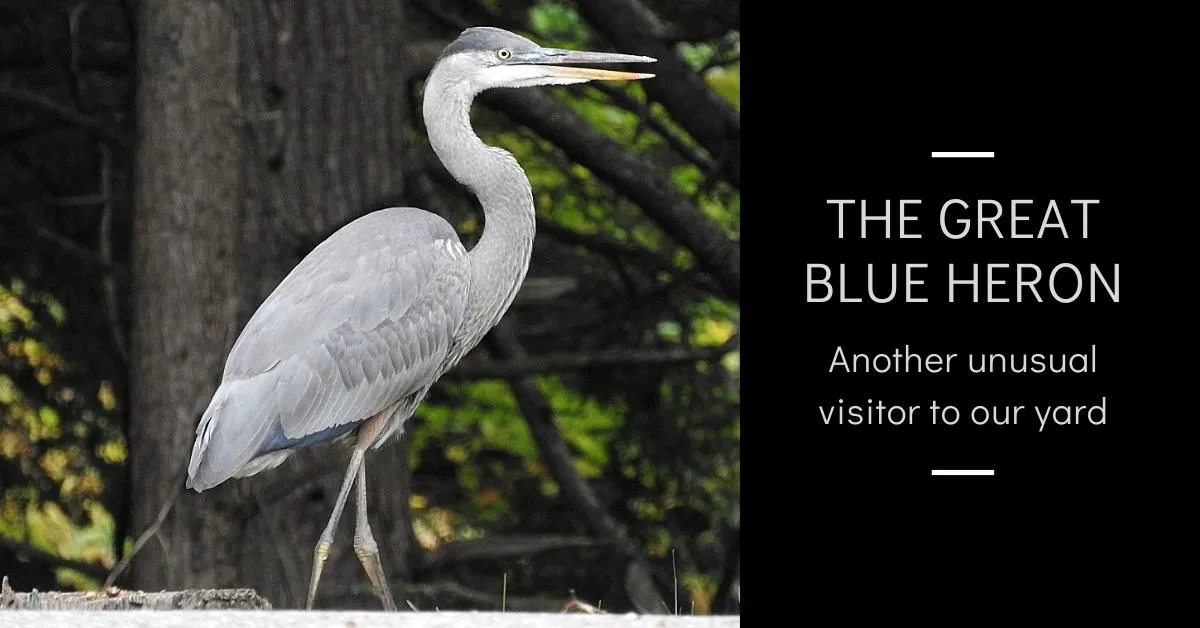
I had grand plans of putting together a post over the weekend, talking about our 32nd wedding anniversary this past Thursday (October 7th). I even discovered a brand new Hive community that I thought would be perfect to try out for the occasion. But even though I wrote the post at least a half dozen times in my head, I still haven't put my proverbial pen to paper, and resigned myself to the fact that I wouldn't have a new post to share for Monday Blogs on Twitter today. Then the Great Blue Heron appeared in our this afternoon and saved the day!
While Great Blue Herons aren't unusual in New Hampshire, it's kind of like seeing the Crayfish back in July - you'd expect to see them near water, and not in the woods where we are (although there are plenty of marshes and rivers not too far away). I had no idea it was outside, but our eldest was in the kitchen just after noontime making her lunch, and she said, "there's a big bird standing in the yard."
Hubby & I flew (HA!) to the kitchen door & saw the tall, slender bird walking slowly down the driveway. I grabbed my camera while Jim got my tripod, and I managed to sneak outside quietly and get some shots and a short video before my new feathered friend flew away.
And even though I'm barely on Facebook these days, I will say it was wicked cool that I dropped one of the photos into a local bird group I belong to, and in very short order the membership confirmed that it was indeed a GBH.
 Everyone so far agrees it's a Great Blue Heron (I blacked out the names since this is a private group).
Everyone so far agrees it's a Great Blue Heron (I blacked out the names since this is a private group).
Before I get to the pictures, because it was such a surprise to see, I took a peek in one of my favorite witchy books for what it means when a GBH shows up unexpectedly. Here's part of the entry for GBHs and Herons in geneneral from Animal-Speak: The Spiritual & Magical Powers of Creatures Great & Small by Ted Andrews
KEYNOTE: Aggressive self-determination and self-reliance
CYCLE OF POWER: SpringHeron
There are many variations of herons, including bitterns and egrets. Storks and cranes should not be confused with them. Herons are part of a group of birds called "waders." It is a bird of the marshlands and shallow waters. All waders have similar physical characteristics--long, thin legs, long necks, and sharp bills. These physical characteristics are important to understand for those who have a heron as a totem.
Legs enable animals and people to move about on the earth. They are symbols of balance, and they represent an ability to progress and evolve. Also the longer the legs, the deeper the water the heron will feed in. The deeper life can be explored. The long thin legs of the heron reflect that you don't need great massive pillars to remain stable, but you must be able to stand on your own. This is especially significant for those with a totem of the great blue heron, as it is a lone hunter.
When it feeds, it stands in the water, reflecting a connection to the earth--while implying the exploration of other dimensions on the earth (water element). It is important for anyone with a heron totem to explore various activities and dimensions of earth life. On the surface, this may seem a form of dabbling, but those with herons as totems are wonderfully successful at being the traditional "jack of all trades."
This ability enables them to follow their own path. Most people will never be able to live the way heron people do. It is not a structured way, and does not seem to have a stability and security to it. It is, though, just a matter of perspective. There is security in heron medicine, for it gives the ability to do a variety of tasks. If one way doesn't work, then another will. This heron people seem to inherently know.
Heron do not seem to need a lot of people in their life, nor do they feel pressure to "keep up with the Joneses" or be traditional in their life roles. The only time they gather in colonies is during the breeding season. They stand out in their uniqueness, and they know how to snatch and take advantage of things and events the average person would not even bother with.
The great blue heron is considered the king of the marsh, although the short-eared owl has been known to readjust the heron's viewpoint. It is the tallest of the herons, and when it flies, its head is folded back in a flat S-shaped loop. This reflects the innate wisdom of being able to maneuver through life and control its life circumstances. It reflects a need for those with this totem to follow their own innate wisdom and path of self-determination. You know what is best for you and should follow it, rather than the promptings of others.
The great blue heron in flight is powerful, and its legs and head are held in a straight line. It uses a slow stalking stride when hunting. When it spies a fish, it spears its prey with its sharp beak and with quick speed. Again it reflects an aggressive movement toward opportunities that present themselves.
Now for the photos...
The Great Blue Heron stops by for a visit
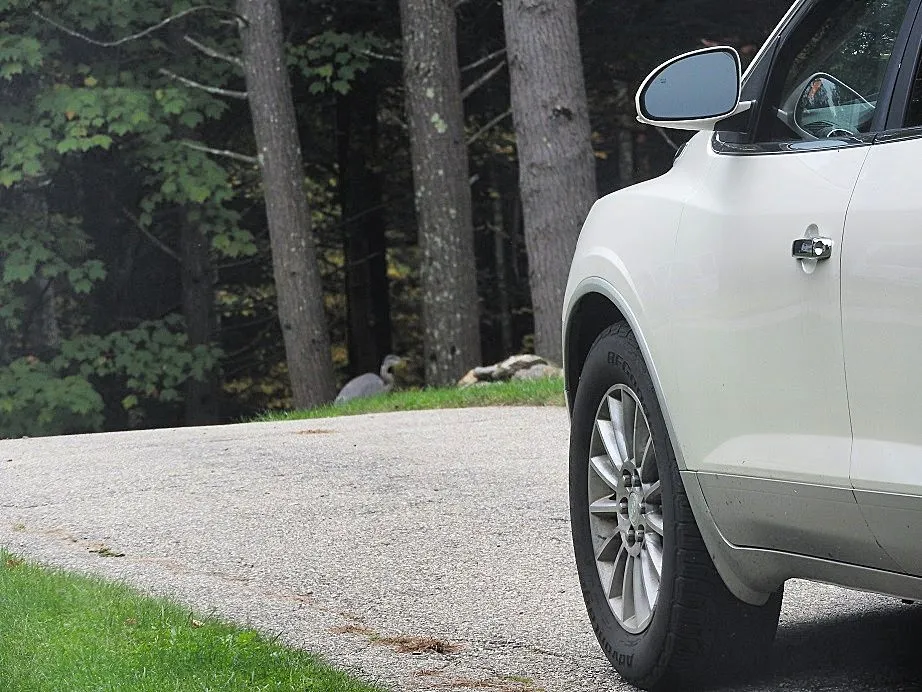 1. This is the first picture I got, through the kitchen door. Not the best shot, but I included it to kind of give a sense of how close he was to the house.
1. This is the first picture I got, through the kitchen door. Not the best shot, but I included it to kind of give a sense of how close he was to the house.
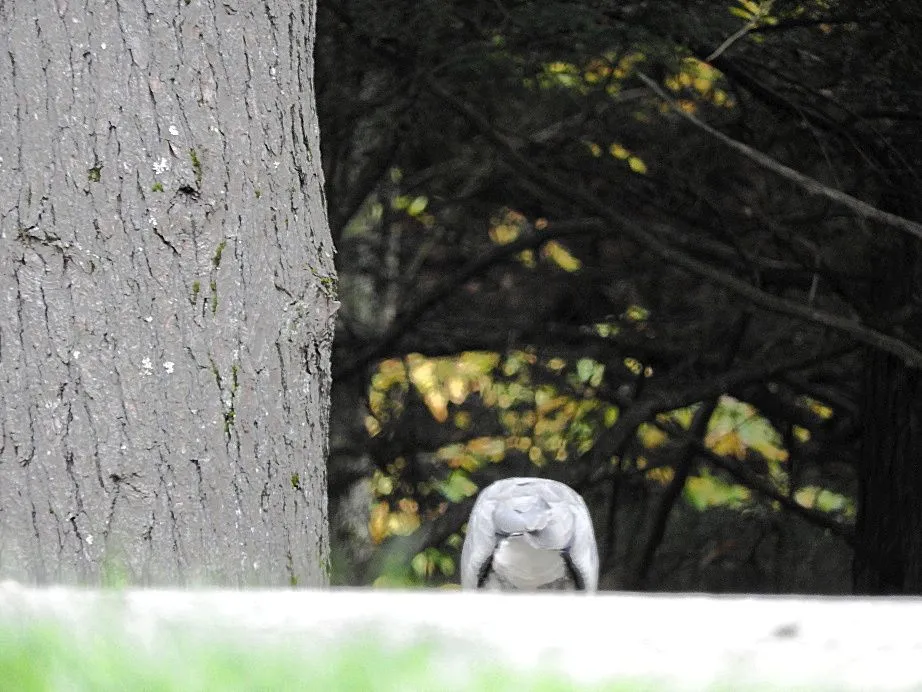 2. My first shot when I got outside...lol! I realized he was looking down over the embankment so I had the chance to quickly & quietly get in position to take more shots.
2. My first shot when I got outside...lol! I realized he was looking down over the embankment so I had the chance to quickly & quietly get in position to take more shots.
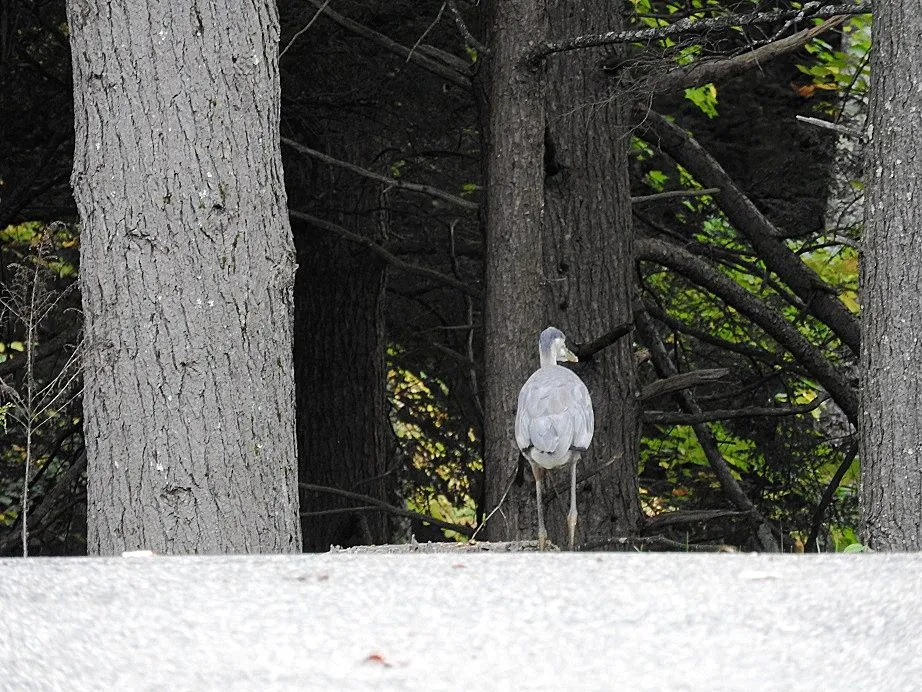 3. Not sure what had his attention, but since he wasn't concerned about me & my camera, I wasn't complaining.
3. Not sure what had his attention, but since he wasn't concerned about me & my camera, I wasn't complaining.
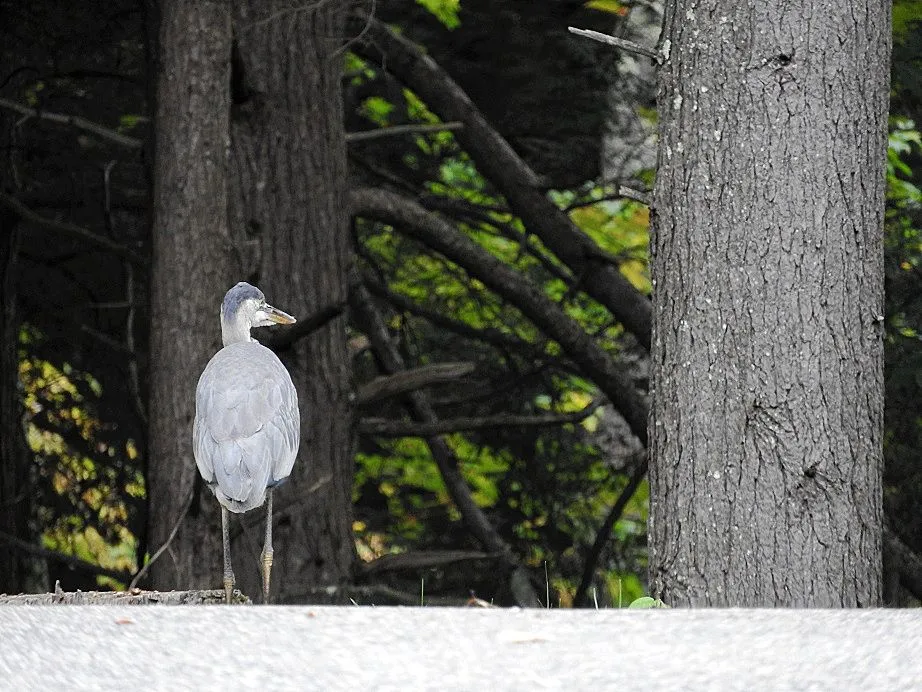 4. He almost looks small here, like crow or mourning dove sized.
4. He almost looks small here, like crow or mourning dove sized.
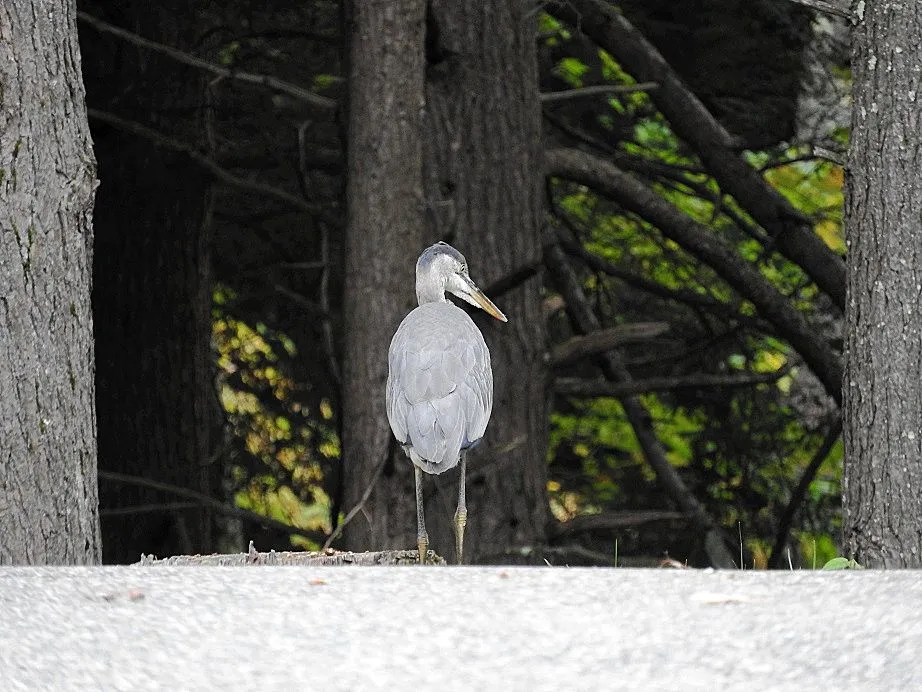 5. But after one more glance down below...
5. But after one more glance down below...
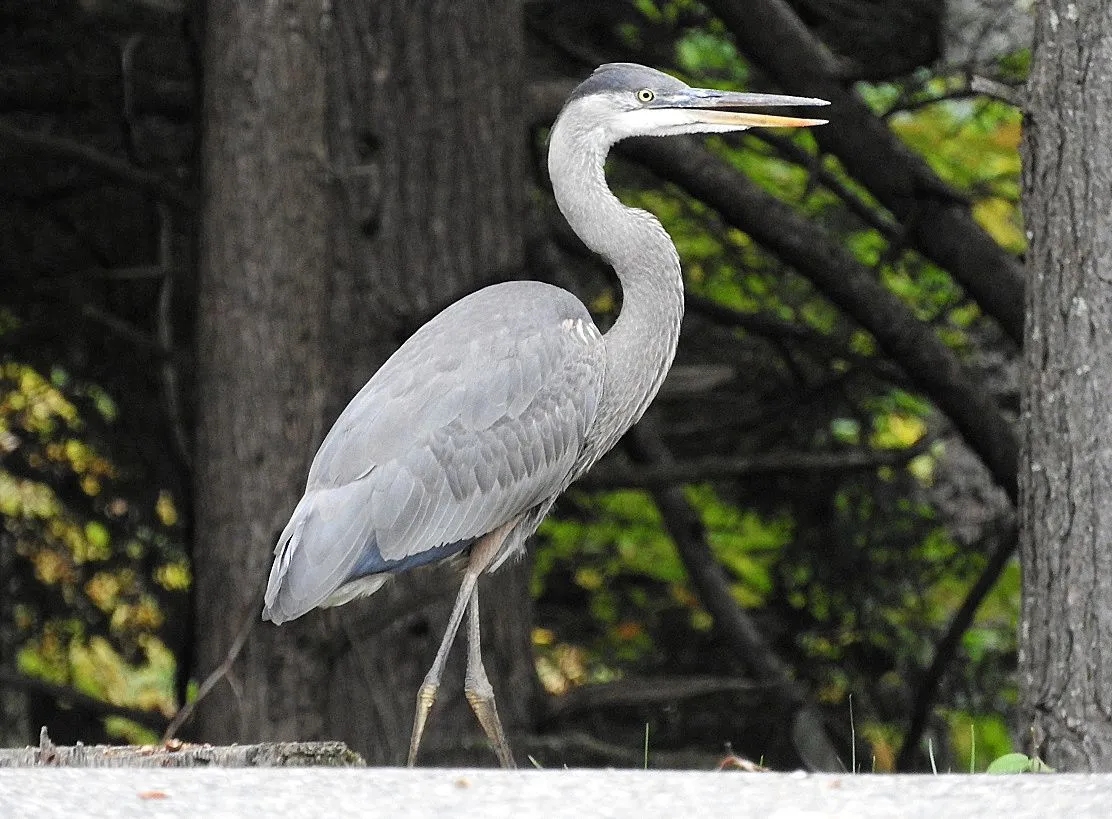 6. ...he started to walk back up the driveway & you could see what a good sized bird he is!
6. ...he started to walk back up the driveway & you could see what a good sized bird he is!
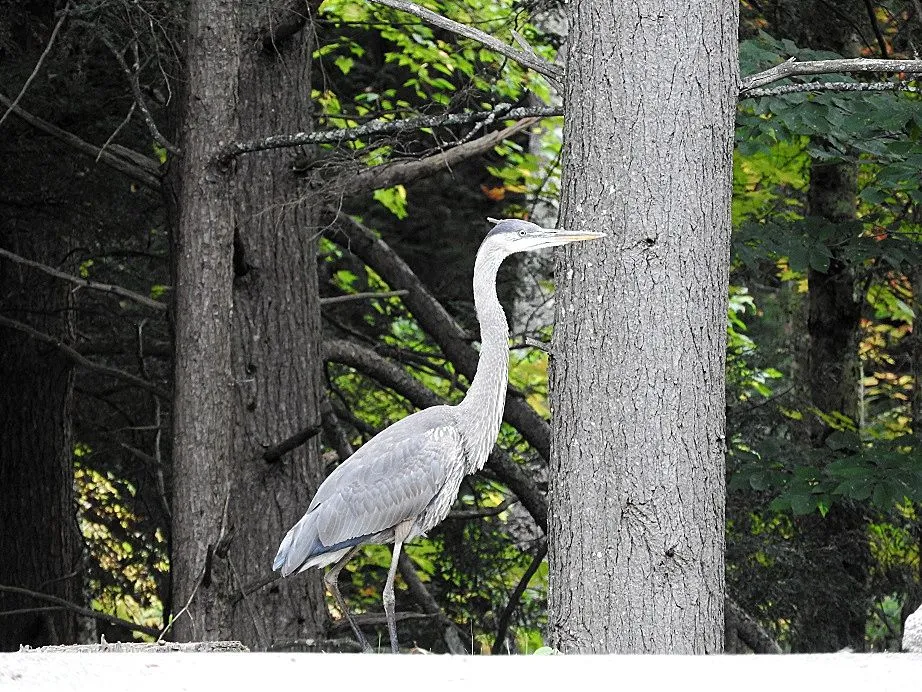 7. He's easily three or four foot tall when all stretched out like this.
7. He's easily three or four foot tall when all stretched out like this.
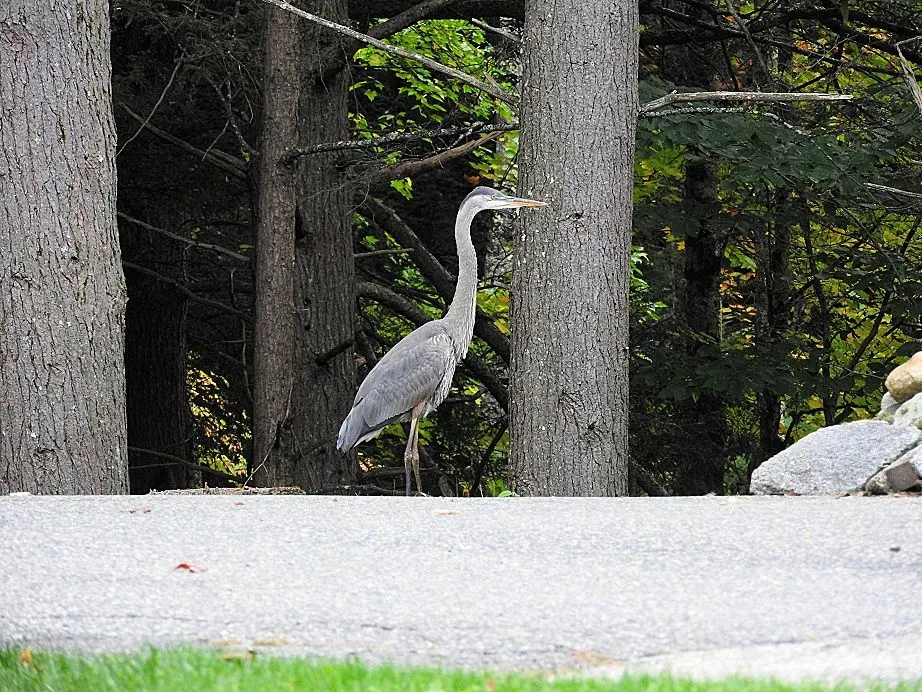 8. He was wicked considerate as well, standing still long enough for me to take some pictures.
8. He was wicked considerate as well, standing still long enough for me to take some pictures.
 9. After he took another glance down below, I decided to take some video...
9. After he took another glance down below, I decided to take some video...
Oh, and yes, I stripped the sound from it as he didn't make a peep, but the noise of my camera zooming in and out, though it was brief, was very loud. And apologies for the minor shakiness - even with a tripod, and even when my tremor isn't visible to other people, it's amazing how much it shows up when I try to record a video. sigh
You can see at the end of the recording he's flying almost straight towards me! He turned at the last minute and flew around the back of our house, and I switched back to camera mode hoping to get some good action shots.
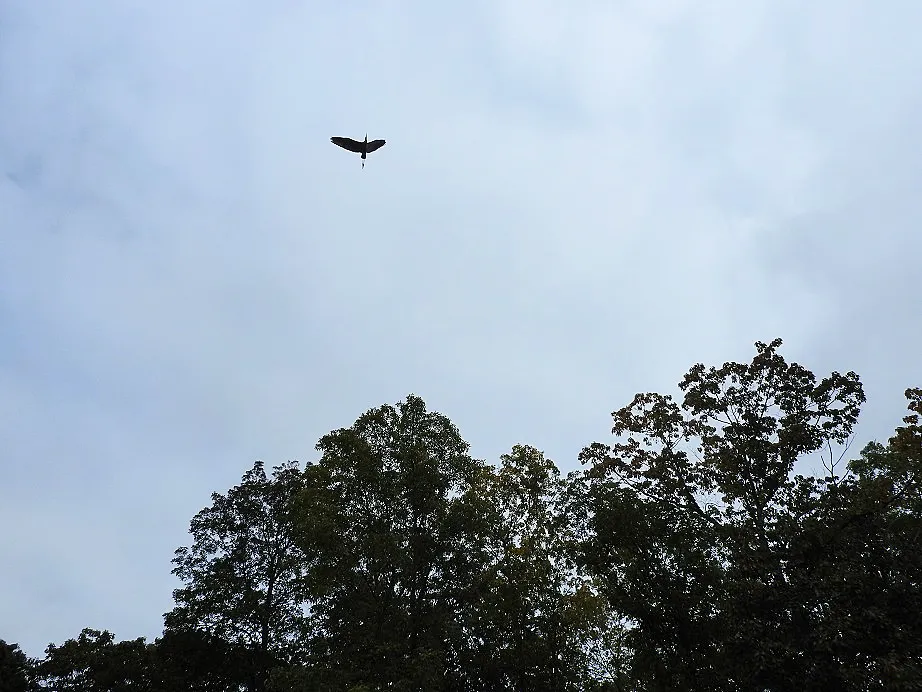 10. While not as slow flying as the Turkey Vultures that visit, he was flying slow enough that I managed a couple quick shots, but I missed the ones where he was right overhead. As I said, he first went around the back of our house, then came back around, passed right above me, then headed back over the trees...
10. While not as slow flying as the Turkey Vultures that visit, he was flying slow enough that I managed a couple quick shots, but I missed the ones where he was right overhead. As I said, he first went around the back of our house, then came back around, passed right above me, then headed back over the trees...
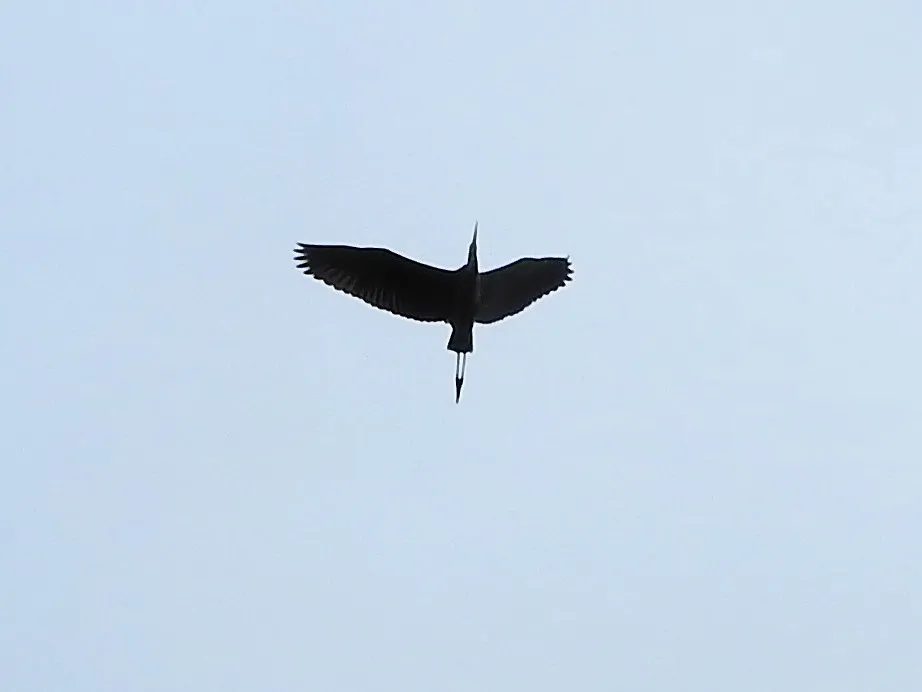 10a. Closeup crop of the same snap.
10a. Closeup crop of the same snap.
 11. Then he gracefully disappeared in the direction of a nearby river. Thanks for stopping in, Mr Heron and come back any time!
11. Then he gracefully disappeared in the direction of a nearby river. Thanks for stopping in, Mr Heron and come back any time!
Hope you enjoyed my photos & video of my new friend, the Great Blue Heron!

Thanks for stopping by!

My posts may occasionally contain affiliate links. If you click through,
I might get a wicked small commission, with no extra cost to you.
My photographs are taken with my trusty Nikon,
sometimes utilizing my handy dandy tripod.
Blog graphics created on Canva
All words and images are mine (unless otherwise indicated),
and can also be found on my various social media sites.
Speaking of witch which...
 |
 |
 |
|---|---|---|
 |
 |
 |


